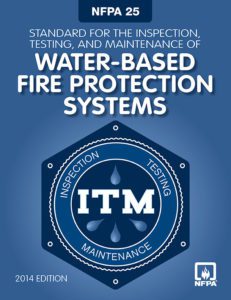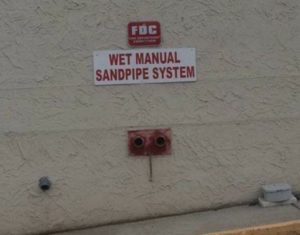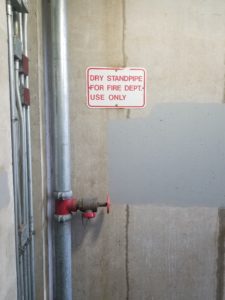Chapter 6 Standpipe and Hose Systems. NFPA 25 ITM series

How Does NFPA 25 Define Different Fire Sprinkler Systems?
 Standpipe systems are just as important as any other fire protection systems in a building. They are not only important for firefighters, but they are also imperative for firefighters to be able to safely ensure occupants are out of the building, and for extinguishing a fire. In many cases the standpipe systems are overlooked as an integral part of fire protection. For them to be fully operational, they must be properly maintained in accordance with Chapter 6 of NFPA 25, The Standard for Inspection, Testing, and Maintenance of Water-Based Fire Protection Systems.
Standpipe systems are just as important as any other fire protection systems in a building. They are not only important for firefighters, but they are also imperative for firefighters to be able to safely ensure occupants are out of the building, and for extinguishing a fire. In many cases the standpipe systems are overlooked as an integral part of fire protection. For them to be fully operational, they must be properly maintained in accordance with Chapter 6 of NFPA 25, The Standard for Inspection, Testing, and Maintenance of Water-Based Fire Protection Systems.
What is a standpipe system? In a nutshell it is a network of (usually water-filled) piping typically found in egress stairways of a building with hose connections on each landing exit or intermediate landing for use by the fire department and comes in several varieties.
3.3.43.1 Automatic Standpipe System.
A system attached to a water supply that can provide system demand and pressure that requires no other actions other than opening a hose valve.
3.3.43.2 Dry Standpipe.
This is the same as an automatic standpipe but utilized a dry pipe valve rather than always having water in the system.
3.3.43.3 Manual Standpipe.
This is a system that is always dry with not water supply and relies solely on the fire department to supply volume and pressure.
3.3.43.4 Semiautomatic Dry Standpipe System.
A system that has an automatic water supply but is manually activated by some sort of action. These are typically deluge systems where the fire department is the key holder of the release mechanism.
3.3.43.5 Wet Standpipe System.
A system that always contains water.
Although not defined in NFPA 25, there is also a manual wet standpipe system. This is a system that always has water but does not provide system demand or pressure and is defined in NFPA 14, The Standard for Standpipe and Hose Systems. Like a manual dry standpipe, the flow and pressure must be provided by the fire department. These systems are common in mid-rise and garden style apartment buildings and are typically combined with the building fire sprinkler system.
The fire department connection is required to have an identification plate depicting the type of standpipe system installed, as well as any specific system demand pressure greater than 150 psi required to supply the fire department connection by the fire department. Often this is not the case, specifically when it comes to manual wet standpipe systems.
There are not many inspection, testing, and maintenance (ITM) requirements for standpipe systems. Most of the components will fall under other chapter requirements of the Standard such as piping and control valves. Hose connections are required to be inspected annually for missing or damaged components, gaskets, leaks, obstructions, and threads. There are differing requirements for testing depending on the type of standpipe and devices installed. There are several requirements for flow testing.It is typically a five- year requirement that includes the standpipe as well as pressure regulating devices. These flow tests are imperative to ensure the expected flow and pressure is available when or if a firefighter is depending on it.

Depending on the edition of NFPA 25 being enforced, the requirements for conducting ITM of standpipe systems may change. As a building owner, contractor, or authority having jurisdiction, it is critical to know what ITM requirements are specific to the edition currently adopted in your jurisdiction. Often the inspection and testing of standpipe and hose systems is not completed. If a standpipe is not properly maintained it can lead to serious injury or death, and for this reason many fire departments around the country may question the integrity of these systems to help combat fires. History has shown that poor maintenance of any fire protection system can lead to loss of life and property.

HAVE A QUESTION ABOUT NFPA 25? CONTACT THE NFSA TODAY
Members and employees of NFSA work very closely in the codes and standards development process. Our team of experts stay on the cutting edge of fire protection issues by participating in over 250 codes and standards development committees. If you have an interest in NFSA’s mission to protect lives and property through the widespread acceptance of the fire sprinkler concept, or you simply want to get more involved in the codes and standards process with NFSA, please visit our membership page.
